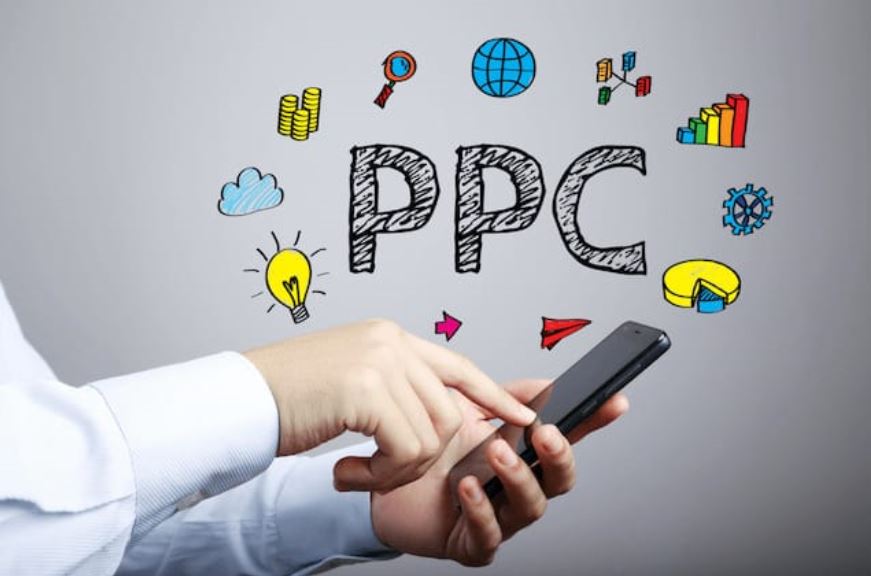In the fast-paced world of digital marketing, PPC advertising stands out as a dynamic tool to drive immediate and targeted traffic. If you’re eager to enhance your visibility, attract potential customers, and maximize your return on investment (ROI), understanding the intricacies of PPC can provide a competitive edge. This blog post aims to guide you through the key elements of PPC advertising, offering insights and strategies that can transform your marketing efforts.
The Basics of PPC Advertising
PPC, or Pay-Per-Click advertising, is a model where advertisers pay a fee each time their ad is clicked. It’s essentially a way to buy visits to your site rather than attempting to earn those visits organically. Platforms like Google Ads and Bing are popular choices for businesses seeking to harness the power of PPC.
Understanding how PPC works can seem complex at first, but it’s crucial for ensuring your campaigns are effective. At its core, PPC revolves around bidding on keywords relevant to your business. These keywords trigger your ads to appear in search engine results when users type them in. The goal is to capture user interest at the moment they’re searching for products or services like yours.
The benefits of PPC are multifold. It allows businesses to achieve highly targeted visibility, reach their target audience quickly, and have full control over their advertising spend. Furthermore, PPC campaigns can be tailored to align with specific business goals, whether it’s increasing website traffic, boosting brand awareness, or enhancing sales conversions.
The Role of Keywords in PPC
Keywords are the backbone of any successful PPC campaign. Choosing the right keywords is crucial, as they determine when and where your ads will appear. Conduct thorough keyword research to identify terms that your potential customers are searching for.
Utilize tools like Google Keyword Planner to discover relevant keywords with the right balance of search volume and competition. It’s essential to select a mix of long-tail and short-tail keywords to cover various search intents. Long-tail keywords may have lower search volumes but often come with higher conversion rates as they indicate more specific user intent.
Regularly reviewing and refining your keyword list is important to remain competitive. Negative keywords, which are terms you don’t want your ads to show for, can also be employed to prevent irrelevant traffic and optimize your ad spend.
Crafting Compelling Ad Copy
Your ad copy is where creativity meets strategy. It’s the first impression potential customers have of your business, so it needs to be enticing and relevant. Start with a compelling headline that grabs attention and incorporates your primary keyword.
The body of your ad should clearly convey the value proposition of your product or service. Highlight unique selling points, special offers, or solutions to common pain points. Ad extensions can also enhance your ads by providing additional information like location, contact details, or links to specific pages on your site.
Testing different versions of your ad copy through A/B testing can help determine what resonates best with your audience. Remember, the goal is to encourage users to click on your ad and eventually convert into customers.
The Importance of Landing Pages
Driving traffic to your website is only half the battle; converting that traffic into leads or sales is where the real challenge lies. Landing pages play a crucial role in this process. Ensure that your landing page aligns with the message and promise of your ad. Consistency in messaging and design is key.
Your landing page should load quickly, be mobile-friendly, and have a clear call to action (CTA). Highlight the benefits of your offering and use persuasive language to guide visitors toward taking the desired action. Whether it’s filling out a contact form, making a purchase, or signing up for a newsletter, make it easy for users to convert.
Regularly analyze the performance of your landing pages using tools like Google Analytics to identify areas for improvement. High bounce rates or low conversion rates may indicate that adjustments are needed.
Setting a Budget and Bidding Strategy
One of the advantages of Charlotte PPC advertising is the ability to control your budget. Start by setting a daily or monthly budget that aligns with your business goals and financial capacity. Keep in mind that PPC is not a set-it-and-forget-it strategy; it requires ongoing monitoring and adjustments.
Your bidding strategy should be informed by your campaign objectives. For instance, if your goal is to increase brand awareness, focusing on impression share might be a good approach. Conversely, if conversions are your main priority, cost-per-acquisition (CPA) bidding can help you optimize for lower costs per conversion.
Regularly review your bids to ensure you’re competitive without overspending. Analyzing the performance data of your campaigns will provide insights into which keywords and ads yield the best results, allowing you to refine your strategy.
Understanding Quality Score
Ad relevance, expected click-through rate (CTR), and landing page experience all contribute to your Quality Score-a metric used by search engines to evaluate the quality of your PPC campaigns. A high Quality Score can lead to better ad placement and lower costs per click.
To improve your Quality Score, ensure your ad copy matches the intent of the keywords and provides value to the user. Your landing page should deliver on the promise of the ad and offer a seamless user experience. Regularly analyze and optimize these elements to maintain a strong Quality Score.
The Power of Geo-Targeting
Geo-targeting allows you to focus your ads on specific geographic locations, making your campaigns more relevant to local audiences. This feature is particularly useful for businesses with physical locations or those targeting regional markets.
By tailoring your ads to specific locations, you can increase their relevance and effectiveness. Use geo-targeting settings to exclude areas where your services are not available or where you have legal restrictions. Additionally, consider creating location-specific ad copy and landing pages to enhance the user experience.
Leveraging Ad Extensions
Ad extensions are a great way to enhance your PPC ads by providing additional information and increasing their visibility. There are various types of ad extensions, such as sitelink extensions, call extensions, and location extensions.
Sitelink extensions allow you to link to specific pages on your website, making it easier for users to find what they’re looking for. Call extensions enable users to call your business directly from the ad, improving the chances of immediate interaction. Location extensions display your business address, encouraging users to visit your physical location.
Incorporating ad extensions can make your ads stand out and increase the likelihood of user engagement.
Expanding Your Reach with Display Ads
While search ads target users actively searching for specific keywords, display ads help raise brand awareness by appearing on relevant websites across the internet. Display ads can be visually appealing and include images or videos to capture user attention.
Use display advertising to reach potential customers at different stages of their buyer’s journey. Remarketing is an effective strategy that targets users who have previously visited your website, reminding them of your products or services and encouraging them to return.
Crafting captivating display ads that align with your brand identity and messaging will help you engage a broader audience and drive traffic to your site.
Monitoring and Measuring Success
Monitoring the performance of your PPC campaigns is essential for continuous improvement. Use analytics tools to track key metrics such as click-through rates (CTR), conversion rates, and return on ad spend (ROAS).
Analyze the data to identify trends, opportunities, and areas for optimization. Regularly reviewing your campaigns allows you to make data-driven decisions, such as adjusting bids, refining keywords, or revising ad copy.
Remember that PPC is a dynamic process, and staying up-to-date with industry trends and best practices will help you stay ahead of the competition.
Conclusion – Taking Your PPC Strategy to the Next Level
PPC advertising is a powerful tool that can drive targeted traffic to your website and boost your business’s online presence. By understanding the fundamentals of PPC, conducting thorough keyword research, and crafting compelling ad copy, you can create effective campaigns that deliver results.
Implementing the strategies outlined in this blog post will help you maximize your ROI and achieve your marketing goals. For those who want to take their PPC strategy to the next level, consider reaching out to a trusted PPC advertising agency like The Social Rook for expert guidance and support.
Ready to supercharge your online advertising efforts? Contact us today and let’s create a PPC campaign that delivers real results!
Source: Busines NewsWire





